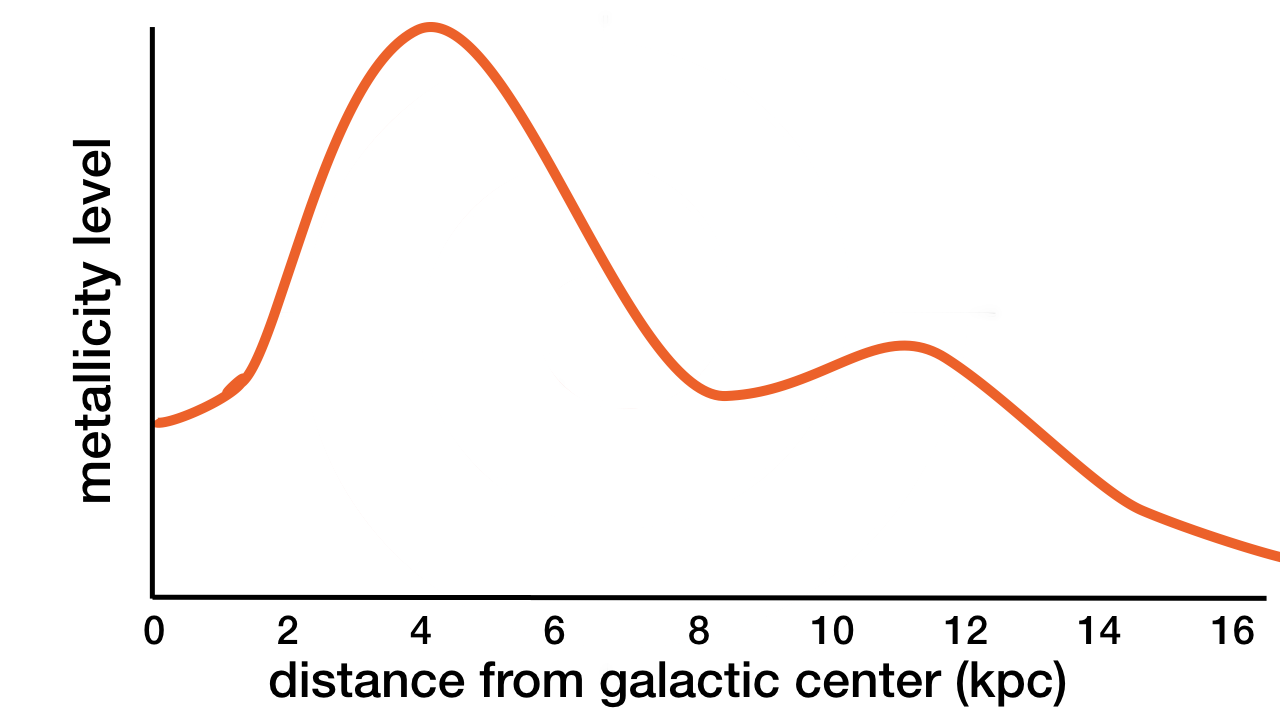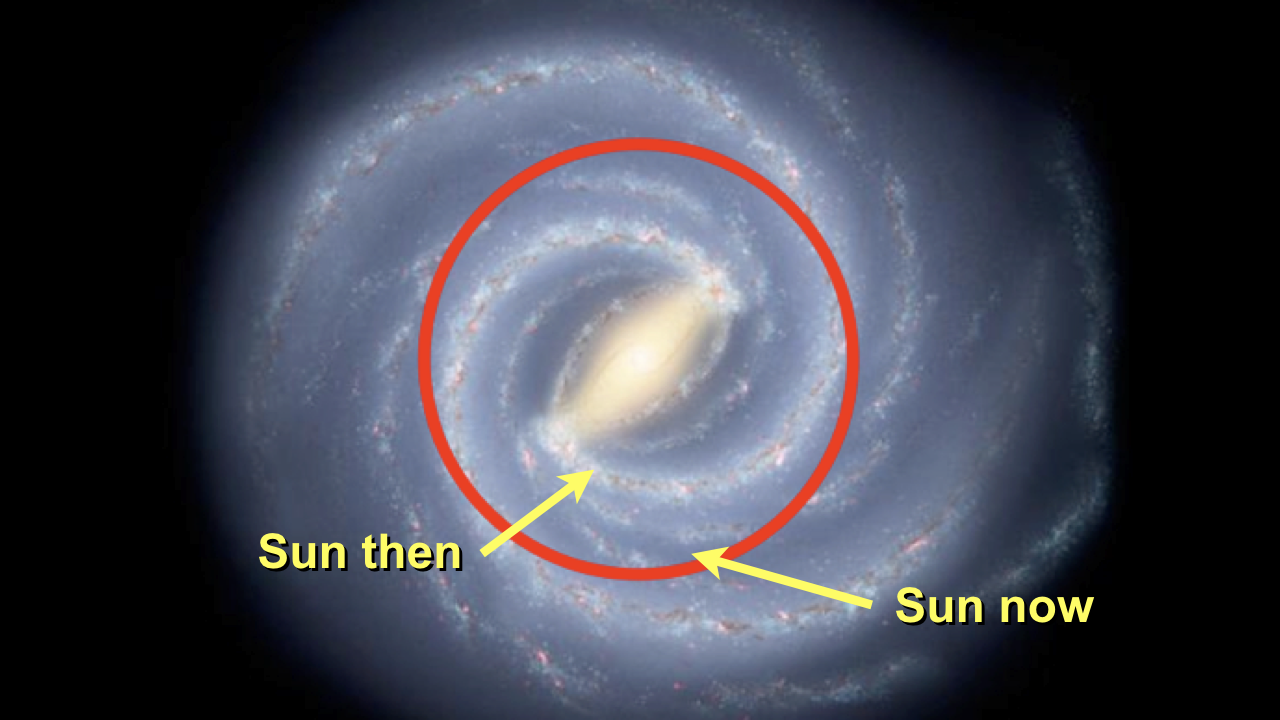Our Special Star: Resolving the G-Dwarf Problem
Does it matter what kind of star the Sun is and where it formed and eventually migrated? Yes, astronomers have learned. In fact, without a just-right solar migration history, humans wouldn’t be
here.
If you were to ask an astronomer what kind of star the Sun is, this is the response you might get: The Sun is a main sequence star of spectral type G2V. It is a G-dwarf star that is halfway through its hydrogen nuclear burning period. It formed in an interstellar molecular cloud 4.57 billion years ago. That description may not mean much to nonastronomers, but it helps guide research into a particular problem and explain why advanced life exists.
The G-Dwarf Problem
G-dwarf stars are hydrogen-burning stars with masses between 0.7 and 1.0 times the Sun’s mass. On the assumption that the Milky Way Galaxy’s G-dwarf stars formed close to their present
location, far too few of them within 100 light-years of the Sun are metal-poor.1 (Metal-poor stars are stars possessing a much lower than average abundance of elements heavier than helium.) Furthermore, far too many of them
are metal-rich. Astronomers refer to these metallicity disparities as the G-dwarf problem.
The Sun is part of the G-dwarf problem. For its location in the Milky Way Galaxy (MWG) and its age (typically the older the star, the lower its metallicity) the Sun is too metal-rich.
Figure 1 shows the abundance of metals in the gas and dust in the MWG’s thin disk relative to distance from the galactic center. The variation (curvature in the plot line) is
the outcome of the MWG accreting gas and dust from gas streams and small dwarf galaxies and distributing the accreting gas and dust along its spiral arms.
Figure 1: Thin Disk Metal Abundance Relative to Distance from the Milky Way’s Galactic Center. The curve shows the relative quantity of elements heavier than helium in the Milky Way Galaxy’s gas and dust with respect to distance from the galaxy’s center. 1 kiloparsec (kpc) = 3,262 light-years. Figure credit: Hugh Ross
Stars form from the distributed gas and dust. Hence, figure 1, with rare exceptions, also shows the metal abundance in stars relative to the stars’ distances from the galactic center. The one exception observed by astronomers is
for stars in the vicinity of the Sun that are several billion years old and more massive than 0.7 solar masses—the G-dwarf problem.
Many astronomers thought that the G-dwarf problem was a consequence of an incomplete sample of accurate metal abundance measurements for stars in the Sun’s vicinity. However, extensive observations of a sample of 5,561 stars within
130 light-years of the Sun revealed that “the G-dwarf problem is even larger than earlier results indicate.”2 A follow-up analysis of 16,682 nearby F and G-dwarf stars “confirm the lack of metal-poor G-dwarfs.”3
These larger samples and more detailed analyses show large departures from the age-metallicity correlation (the older the star, the lower the metallicity) for G-dwarf stars in the solar neighborhood.4 Furthermore, the departures
are most dramatic for the older G-dwarf stars, stars like the Sun.5 Such departures indicate that stars with masses greater than 0.7 solar masses born in the more metal-rich regions of the MWG must have migrated into the
current solar neighborhood.
For the MWG there are three possible drivers of such substantial stellar migration:
- scattering at a galactic orbital resonance6
- scattering by a giant molecular cloud7
- resonance overlap of the central bulge-bar and the spiral arms8
Likely all three drivers were in operation.
Astronomers Yue Wang and Gang Zhao have demonstrated that the observed metallicities of G-dwarfs in the solar neighborhood can be explained by identifying where the stars formed and where they migrated. They think that most of the G-dwarfs
formed in the local region while most of the remaining G-dwarfs formed in the inner disk of the MWG and later migrated outward to where they presently reside.9 They further deduced that the greater the age of a G-dwarf star
the more likely it migrated from the MWG’s inner disk. Therefore, even without taking note of the Sun’s relatively high metallicity, at an age of 4.57 billion years, the Sun has a high probability of having migrated from
the inner disk.
Migration by Design
This special stellar migration design feature of the MWG explains why it can host a star of the just-right mass, just-right age, and just-right metallicity residing in the just-right location so
that it can host a planet on which advanced life exists and thrives. The Sun formed 4.57 billion years ago in the most metal-rich part of the MWG. After it formed, the Sun migrated from its deadly-for-life birthplace to the safest-for-life
location in the MWG (see figure 2). All these just-rights and the specified migration imply that both the MWG and the Sun have been designed to make advanced life possible.
Figure 2: Sun’s Journey from Danger to Safety. The annulus marks the Sun’s co-rotation distance. Image credit: NASA/JPl-Caltech (R. Hurt); Diagram credit: Hugh Ross
Featured image: The Sun Showing Sunspots and a Transit of Venus
Image credit: NASA/SDO/AIA/EVE/HMI
Endnotes
- B. Nordström et al., “The Geneva-Copenhagen Survey of the Solar Neighbourhood. Ages, Metallicities, and Kinematic Properties of ∼14,000 F and G Dwarfs,” Astronomy & Astrophysics 418, no. 3 (May 2004): 989–1019, doi:10.1051/0004-6361:20035959.
- Bjarne Rosenkilde Jørgensen, “The G Dwarf Problem: Analysis of a New Data Set,” Astronomy & Astrophysics 363 (November 2000): 947, http://aa.springer.de/papers/0363003/2300947.pdf.
- Nordström et al., “The Geneva-Copenhagen Survey,” 989.
- Nordström et al., “The Geneva-Copenhagen Survey”; Jørgensen, “The G Dwarf Problem.”
- L. Casagrande et al., “New Constraints on the Chemical Evolution of the Solar Neighbourhood and Galactic Disc(s),” Astronomy & Astrophysics 530 (June 2011): id. A138, doi:10.1051/0004-6361/201016276; M. Haywood, “Radial Mixing and the Transition between the Thick and Thin Galactic Discs,” Monthly Notices of the Royal Astronomical Society 388, no. 3 (August 2008): 1175–84, doi:10.1111/j.1365-2966.2008.13395.x.
- Ralph Schönrich and James Binney, “Chemical Evolution with Radial Mixing,” Monthly Notices of the Royal Astronomical Society 396, no. 1 (June 2009): 203–22, doi:10.1111/j.1365-2966.2009.14750.x.
- Schönrich and Binney, “Chemical Evolution.”
- I. Minchev and B. Famaey, “A New Mechanism for Radial Migration in Galactic Disks: Spiral-Bar Resonance Overlap,” Astrophysical Journal 722, no. 1 (October 10, 2010): 122–21, doi:10.1088/0004-637X/722/1/112.
- Yue Wang and Gang Zhao, “The Influence of Radial Stellar Migration on the Chemical Evolution of the Milky Way,” Astrophysical Journal 769, no. 1 (May 20, 2013): id. 4, doi:10.1088/0004-637X/769/1/4.








